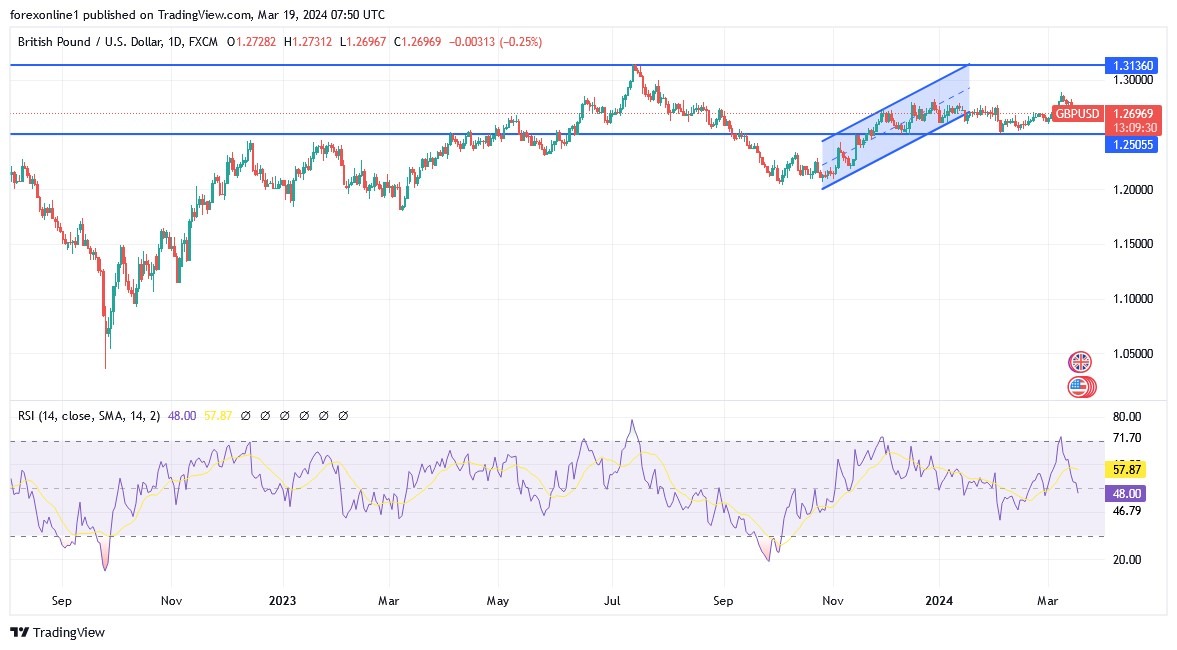- The GBP/USD exchange rate fluctuated last week, as a flow of economic data from the US and UK led to volatility in the pair.
- Currently, the GBP/USD currency pair is stabilizing around 1.2696, its lowest level in two weeks.
- US dollar (USD) exchange rates were supported by fading rate cut bets.
- Moreover, the US dollar started the week trading higher against most of its major currency peers, as the cautious market mood boosted the safe-haven greenback.
Yesterday, the US dollar extended its gains after the latest US inflation data was released. According to the economic calendar, headline inflation came in higher than market expectations at 3.2% in February, while core inflation fell below expectations to 3.8%. The stronger-than-expected inflation reading undermined speculation about future rate cuts, ultimately boosting US dollar exchange rates.

By the end of last week, US dollar exchange rates had risen after a rebound in US retail sales and a decline in local unemployment claims. Additionally, the latest US Producer Price Index figures beat expectations on Thursday, rising from 0.3% in January to 0.6% in February. As a result, signs of economic strength and rising prices undermined any expectations of a rate cut and supported the US dollar. The US dollar ended the week mixed, as the latest US consumer confidence index for March came in slightly below expectations, indicating a decline in consumer confidence.
Conversely, the pound sterling started the week on the back foot, as risk-off flows weighed on the increasingly risk-sensitive pound. On Tuesday, the pound continued its downward trend as the UK's latest jobs report came in below expectations, with unemployment rising and wage growth slowing. Thus, this reinforced bets on a future rate cut by the Bank of England, which in turn weighed on sterling exchange rates.
Moving into Wednesday, the latest UK GDP figures were released, confirming the UK economy's recovery in January, rising from -0.1% to 0.2%. After the release. Recently, the pound was supported by improved economic expectations, with some economists predicting that the UK's shallow recession in the second half of 2023 could "end before it even begins."
However, upon economists' analysis of the latest data, the headline figure was not as robust as initially appeared, and deep concerns about the overall health of the British economy choked the pound on Wednesday. As a result, the pound ended the week confined to a narrow range, with the lack of economic data until the end of the week, alongside mixed market sentiment, leaving sterling exchange rates directionless.
Top Forex Brokers
GBPUSD Expectations and Analysis Today:
Looking ahead, the primary driver of the GBP/USD exchange rate movement this week is likely to be the upcoming interest rate decisions from the US Federal Reserve and the Bank of England, scheduled for Wednesday and Thursday respectively. With both central banks expected to leave interest rates unchanged, pound and dollar investors are likely to turn to accompanying statements for guidance.
Any cautious comments from either side could lead to fluctuations in the GBP/USD exchange rates midweek. Prior to that, the latest inflation data in Britain is expected to be released. Following recent forecasts from the Office for Budget Responsibility (OBR) indicating that inflation in the UK is expected to drop to 2% in the second quarter of 2024. Therefore, any signs of inflation slowing down may weaken the British pound.
Based on the performance on the daily chart, the GBP/USD exchange rate is undergoing a corrective decline, supported by a move towards the 1.2600 support level. Further momentum in the US dollar may provide bears with a stronger opportunity to move towards deeper support levels, particularly 1.2545 and 1.2480 respectively, which in turn will drive technical indicators towards oversold levels.
Ready to trade our daily Forex analysis? Check out the best forex trading company in UK worth using.
